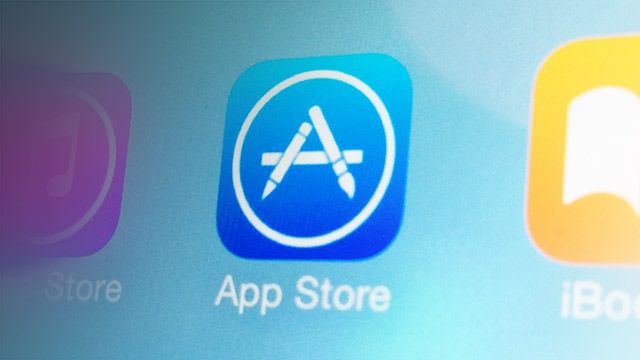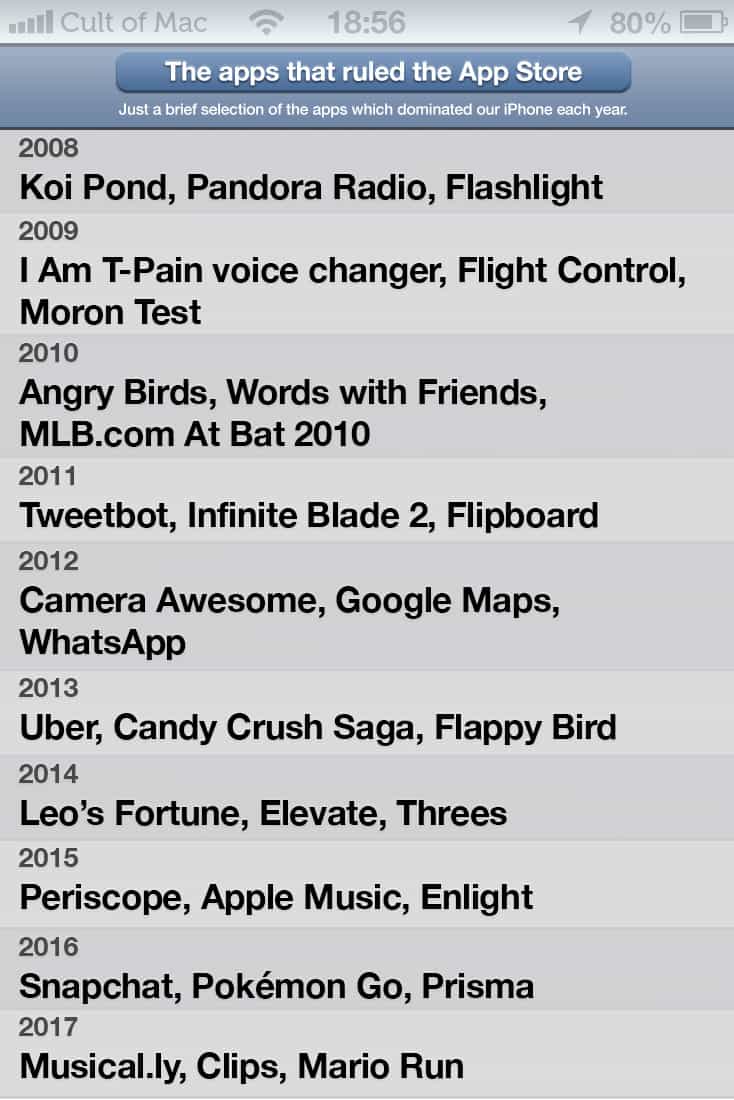
 July 10, 2008: Apple launches the App Store, an online hub that lets iPhone owners browse and download apps made by third-party developers. Transforming the iPhone from a locked-down platform to a generative one, the App Store means that every iPhone user can have his or her own “killer app” depending on the software they want — from social networking to composing music to playing games.
July 10, 2008: Apple launches the App Store, an online hub that lets iPhone owners browse and download apps made by third-party developers. Transforming the iPhone from a locked-down platform to a generative one, the App Store means that every iPhone user can have his or her own “killer app” depending on the software they want — from social networking to composing music to playing games.
One of the most significant launches in Apple history, the App Store opens up a whole new revenue stream for Cupertino. It’s hard to believe that Steve Jobs was originally dead-set against it!
Apple launches App Store on July 10, 2008
Apple proved its paid downloads concept five years before the App Store launch, courtesy of iTunes. Launched in 2003, five years later iTunes was already well on its way to becoming the largest music vendor worldwide.
A software-focused version of iTunes, therefore, made all the sense in the world. And launching the App Store didn’t even require Apple to broker deals with giant companies the way iTunes did. Instead, developers submitted their apps to Apple. This time around, Cupertino did not need to persuade entertainment industry titans to take a gamble on a new way of selling their products.
Steve Jobs didn’t want the App Store
For a while, idiosyncratic Apple CEO Steve Jobs refused, though. His feared that allowing outside apps on the iPhone would water down Apple’s level of control. Part of this stemmed from the potential security threat of running third-party apps on the device. But part of it resulted from the fact that Jobs hated the idea of poorly designed software sullying his beautiful new creation.
However, others inside Apple — particularly Phil Schiller and Apple board member Art Levinson — saw the potential of the App Store. They lobbied for Jobs to change his position and eventually won him over. In March 2008, Apple announced the start of what became the iPhone Developer Program.
Coders who wanted to release apps on the iPhone’s soon-to-launch App Store paid a standard $99 annual fee. (A higher-priced enterprise tier was initially available only to companies with more than 500 employees.) Developers received 70% of the sales revenue from their apps, with Apple taking the other 30%.
App Store launch time
By the time Apple launched the App Store on July 10, 2008, 500 third-party apps were available, with 25% of them free to download. The App Store became an immediate success for Apple, garnering a massive 10 million downloads in its first 72 hours.
Some developers who jumped on the App Store train from day one reaped rich rewards. For example, a 28-year-old programmer named Steve Demeter created a sliding-blocks puzzle game called Trism that made use of the iPhone’s accelerometer. Selling Trism for $5, he made $250,000 within the first two months of the App Store.
Soon, another indie developer trumped Demeter’s tale of App Store success. Ethan Nicholas earned $600,000 in one month with his tank artillery app, ishoot. (Sadly, it’s vanished from the App Store now.)
The odds of landing a hit decreased as more and more apps flooded into the App Store after its launch. However, the growing number of iPhone (and later iPad) users meant that the App Store provided a whole new way for developers to make a living.

Photo: Ste Smith/Cult of Mac
Success by the numbers
Since its launch, the App Store has gone from strength to strength. By September 2008, it racked up 100 million downloads. By April 2009, it hit 1 billion. More than a decade on, we can pick from nearly 2 million apps, which have been downloaded more than 370 billion times.
Today, the idea of an App Store is no longer an Apple exclusive. In a July 2011 court case with Amazon, Apple lost proprietary use of the term “App Store.” That opened up the possibility of rival services using the phrase Apple popularized to name their own app stores.
Apple also has changed its terms for developers in response to governmental pressure. In 2020, Apple slashed its cut from 30% to 15% for developers earning less than $1 million a year in the App Store. That move came as Apple faces intense scrutiny — both in the United States and abroad — from governments over its business practices. Antitrust regulators remain keenly focused on Apple’s “walled garden” approach to the App Store.
The EU’s Digital Markets Act, which went into effect in early 2024, brought big changes to the App Store in Europe. Apple was forced to allow alternative app marketplaces and sideloading of iPhone apps. And the company still faces the potential of massive fines as EU technocrats find fault with Apple’s methods for compliance with the new rules.
Still, a decade and a half after its launch, the App Store remains ridiculously profitable for the company — and a major selling point for Apple users. No wonder Apple co-founder Steve Wozniak called it Apple’s most important invention. For a company that made the Apple II, the Mac, the iPod, the iPhone itself, that’s high praise indeed.







